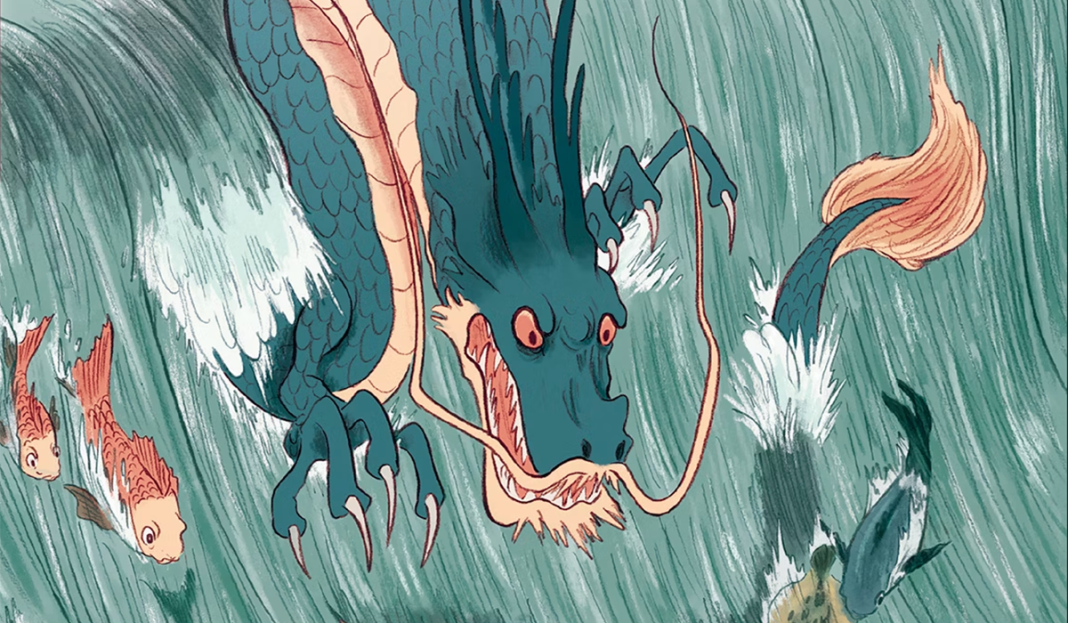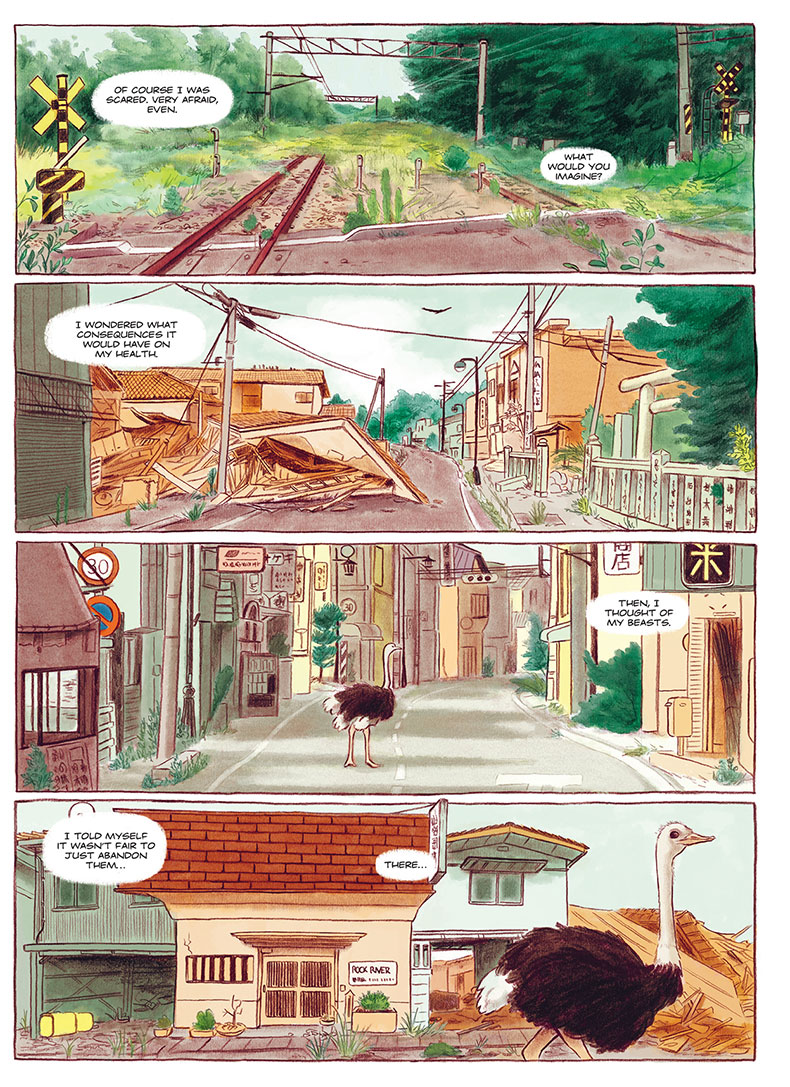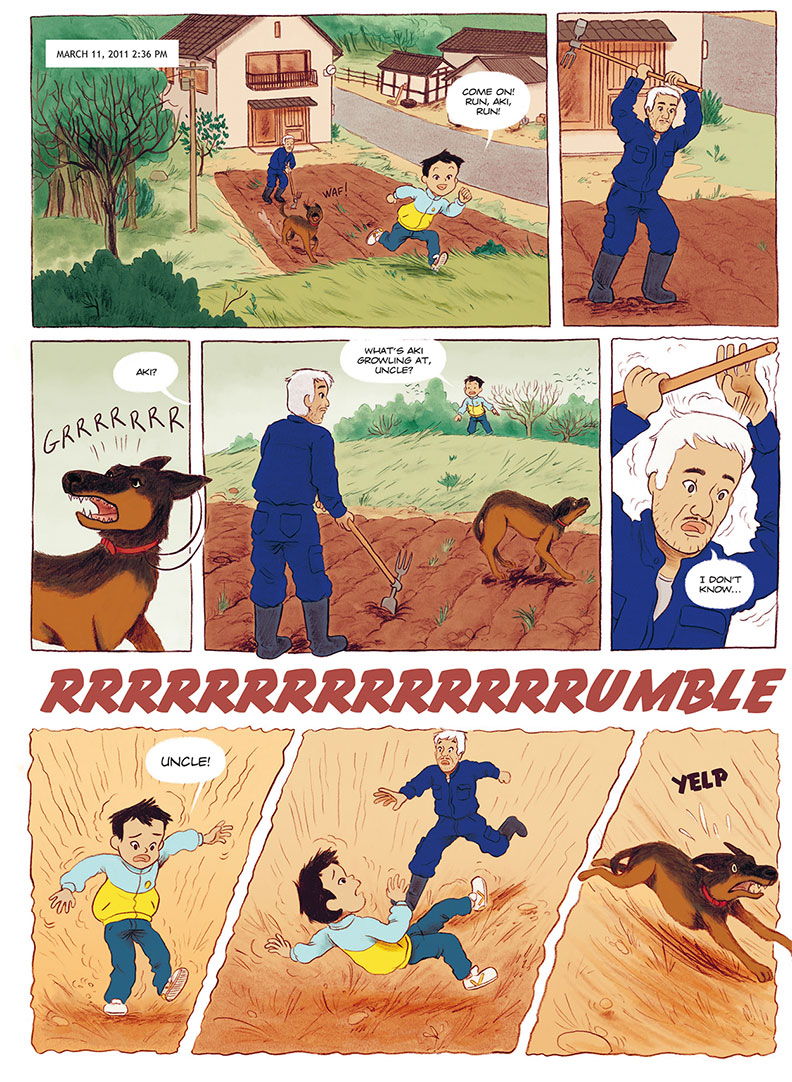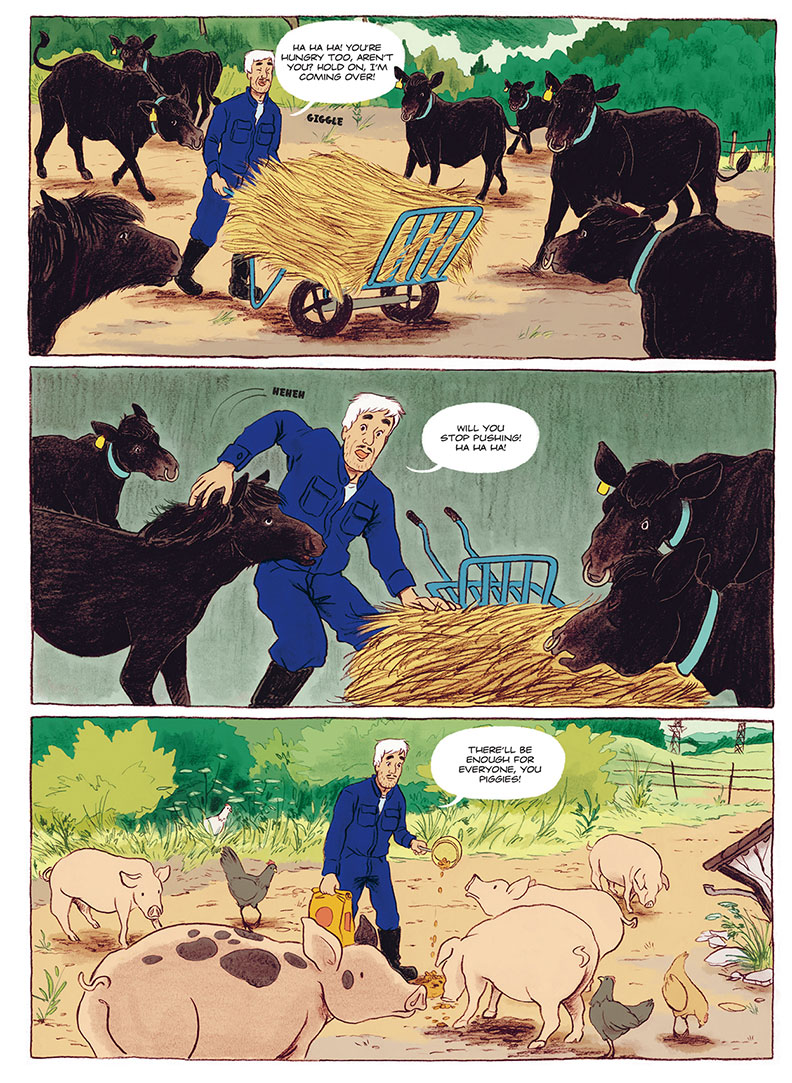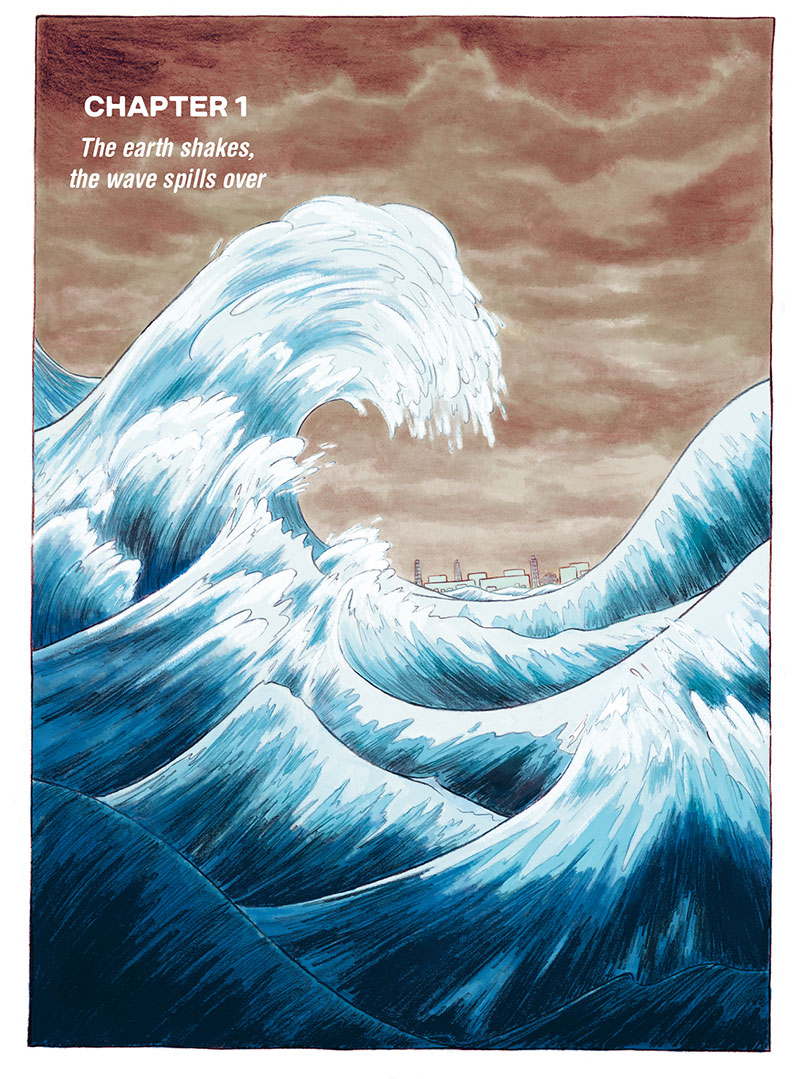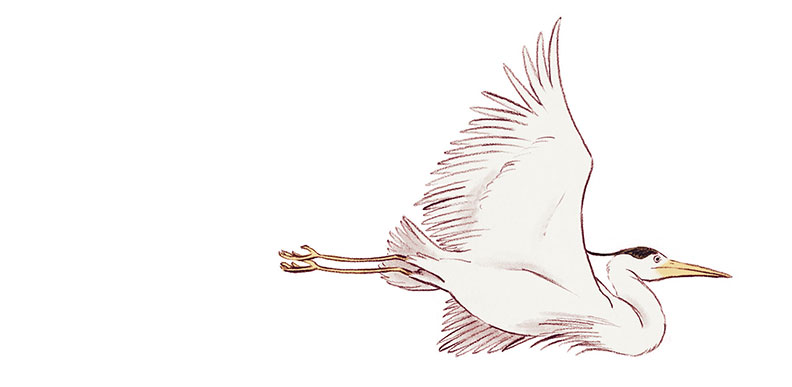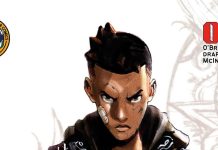Guardian of Fukushima
Writer: Fabien Grolleau
Artist: Ewen Blain
Publisher: TOKYOPOP
Publication Date: February 28, 2023
“Of course I was scared. Very afraid, even.”
“What would you imagine?”
“I wondered what consequences it would have on my health. Then, I thought of my beasts. I told myself it wasn’t fair to just abandon them… there… in Fukushima… in the heart of the irradiated zone.”
Abandoned train tracks, a toppled house, and a wandering ostrich set the stage for the tale. With lucid, sure strokes, the French creative team of writer Fabien Grolleau and artist Ewen Blain establish the stakes and motivation behind one man’s self-sacrificing actions.
Thus begins the moving and magic-infused graphic novel Guardian of Fukushima, published by TOKYOPOP this February as part of their Comics That Matter initiative. It’s hard to make a book about a natural disaster enjoyable to read, but Grolleau and Blain have done so with reverence and grace.
A man of action
The book is based on the true story of Japanese farmer Naoto Matsumura, who stayed behind during the evacuations in his hometown of Tomioka. Amidst the earthquake and tsunami aftermath and Fukushima nuclear plant disaster of 2011, he fed and cared for the domesticated animals left behind, and continues to this day. I knew I had to read this book and it’s an honor to review it.
As we get into the story, we see a little of the Matsumura family’s rural life in Tomioka. Then we’re on the ground with the people of the neighborhood as the disaster unfolds. Matsumura is with his parents and his young nephew who is visiting.
The matter-of-fact way that the family deals with ongoing losses in the days that follow is wrenching in its understatement. There is real personal tragedy here, intermixed with magical symbolism that’s never heavy-handed. Grolleau and Blain pack a lot of power into minimal pages. Blain’s organic style and painterly colors are a beautiful match for Grolleau’s spare and thoughtful words. Their pacing is spacious, giving the grief room to breathe. Yet they also show moments of quiet beauty and hope amidst the sadness. Aside from his home, we don’t see much of what made Matsumura the way he is. But simply watching his actions tells us a lot.
A real story made mythical
You might be familiar with Matsumura’s story from the news (although I wasn’t, so I’m most grateful to these creators for bringing it to my attention). He still lives in the radiation zone, somehow withstanding much more exposure daily than most people do in their whole lives. Before I even heard the details, I had a lump in my throat. It’s hard not to be moved by his courage and immense care for our fellow creatures, in the face of a natural—and in some ways, unnatural—disaster. The European creative team must have felt similarly, because in an interview contained in the back of the book, they acknowledged that the message and impact of his story, while it took place in Japan, is universal.
In the interview, writer Grolleau also shared that—while he researched his subject fairly extensively—he and Blain did take artistic liberties in service of the story: “If we are not necessarily precise in the reality of the facts, we hope to be faithful to the spirit of Matsumura and Japan in general. I’m satisfied to hear from specialists that we have not betrayed them.” As a person with some Japanese heritage myself, I thought the team’s respect for the man and his country’s experience really shone through. More documentation and history are included in the back for those whose appetite was whetted.
As mentioned, the story takes some mythical turns. Gods and men from old Japanese tales appear in the bedtime stories Matsumura tells his young nephew, in the boy’s dreams, and in hints of influence during disaster scenes. Compositions are beautifully thought out and expressed by Grolleau and Blain, walking the fine line between naturalistic and surreal. As the book goes on, folkloric images lend an epic feel to certain moments.
Making sense of the Fukushima disaster
While I have great respect for documentaries, the story somehow feels “truer” to me emotionally than a purely journalistic take might (although there is no shortage of realism). The symbols inhabiting this story world make unthinkable events even more resonant and make a sort of grander sense out of the tragedy and larger forces at play.
The story is also a cautionary tale about the risks of nuclear power. It doesn’t offer any pat answers, only hard questions about its human—and animal—costs.
At its beating heart, the story is about a remarkable man who saw a chance to alleviate the suffering of many animals and save lives, and did so. He seems a man of few words, but those he shares matter much: “All lives are important.”
Bravo to Grolleau and Blain for skillfully elevating an already profound story. I would recommend Guardian of Fukushima to anyone.
Guardian of Fukushima is out now in both print and digital from TOKYOPOP.
Check The Beat’s review section for a new graphic novel review every Friday in 2023!


